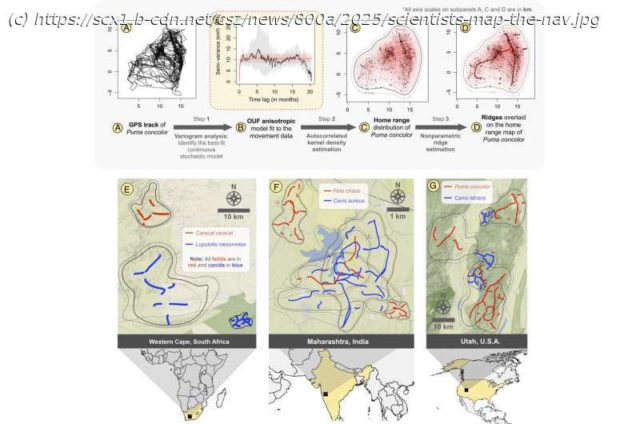The next time you watch your dog visit the same places around your yard or notice that your cat seems to explore a new area every time it ventures outside, consider this: You might be witnessing an ancient evolutionary strategy in action.
The next time you watch your dog visit the same places around your yard or notice that your cat seems to explore a new area every time it ventures outside, consider this: You might be witnessing an ancient evolutionary strategy in action.
A study published in the Proceedings of the National Academy of Sciences reveals that wild canids have, on average, both a greater density of travel routeways and a greater probability of routeway usage than wild felids. Led by University of Maryland researchers, the collaborative study used GPS collar data detailing the movements of 1,239 individual carnivores representing 34 species across six continents over the past decade—the largest comparative study of carnivore movement ecology ever conducted.
«We found that carnivore species use space in fundamentally different ways», said the study’s lead scientist, William Fagan, a Distinguished University Professor of Biology at UMD. «Members of the dog family appear much more structured in their uses of space. On average, they rely more heavily on favored travel routes compared to members of the cat family.»
Fagan and his collaborators found that wild members of the dog family—wolves, foxes, coyotes, and others—consistently create and stick to specific travel routes within their territories.
Домой
United States
USA — IT Study reveals wild canids favor structured travel routes, unlike their feline counterparts






